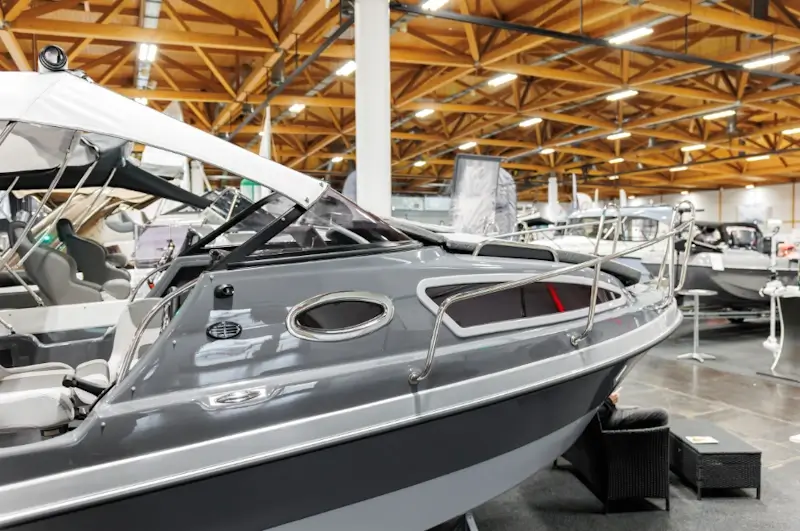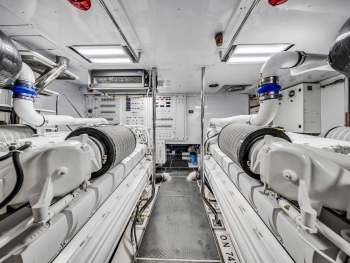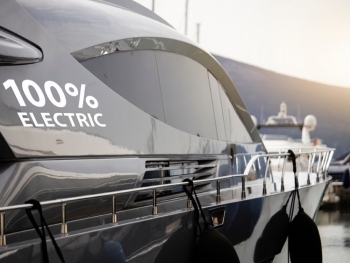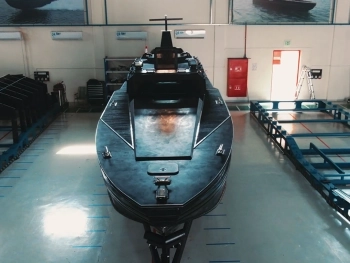When it comes to yachts, beauty may be the first thing we notice - the sleek lines, the polished decks, the graceful profile cutting through the water.
But behind every elegant design lies a world of engineering decisions that determine not just how a yacht looks, but how it performs.
From hull shape to structural materials, modern yacht design blends science and art. These factors influence speed, efficiency, comfort, stability, and even resale value. Understanding them helps buyers make smarter choices - whether comparing fiberglass cruisers, aluminum explorers, or innovative new builds from boutique designers like Perulla.
1. The Evolution of Yacht Design
Yacht design has transformed dramatically over the past 50 years.
- In the 1970s–1980s, wood and fiberglass dominated small and mid-size yacht construction.
- By the 2000s, aluminum and composite materials brought lighter, faster, and more complex hulls.
- Today, innovation focuses on hydrodynamic efficiency, sustainability, and new materials like polyethylene and carbon fiber.
Modern yachts aren’t just built to float - they’re designed to glide, conserve energy, and endure.
2. The Science of Shape: Hydrodynamics and Performance
The shape of a yacht’s hull defines its performance more than any other factor. It determines how efficiently it moves through water, how it handles waves, and how it feels to passengers.
2.1 Displacement vs. Planing Hulls
Yacht hulls generally fall into two performance categories:
| Type | Description | Strengths | Ideal Use |
|---|---|---|---|
| Displacement Hull | Pushes water aside as it moves | Efficient at low speeds, stable in heavy seas | Long-range cruising, trawlers, explorers |
| Planing Hull | Lifts to skim over water at speed | Fast, responsive, thrilling to drive | Coastal cruising, sport yachts |
| Semi-Displacement Hull | Hybrid that partly lifts on plane | Balance between range and performance | Luxury cruisers, hybrid yachts |
A yacht’s intended purpose drives hull choice.
For example, a Perulla yacht built for both comfort and durability might favor a semi-displacement or polyethylene design optimized for fuel efficiency and toughness.
2.2 Key Shape Features and Their Effects
-
Bow Design –
- A fine entry bow slices waves efficiently for smoother motion.
- A flared bow deflects spray and adds buoyancy in rough seas.
- A reverse bow (common on explorers) improves efficiency and interior space.
- Beam (Width) –
A wider beam improves stability and space but adds drag. Designers must balance comfort with performance. -
Keel Depth –
A deeper keel improves tracking and resistance to rolling but limits shallow-water access. -
Chine Shape –
Hard chines add lift and reduce spray on planing hulls; soft chines create a gentler ride for cruisers.
Modern computational fluid dynamics (CFD) tools now allow designers to simulate thousands of wave interactions - optimizing shape before the first mold is built.
3. Material Matters: What Yachts Are Made Of
The material used in a yacht’s construction affects nearly every performance aspect - from fuel efficiency to handling and maintenance.
3.1 Fiberglass (GRP)
The most common yacht material, fiberglass combines strength, flexibility, and relatively low cost.
Advantages
- Lightweight and corrosion-resistant
- Easily molded into complex shapes
- Low maintenance
Limitations
- Can delaminate or crack under extreme stress
- Repairs may require specialized labor
Best for: Coastal cruisers, pleasure yachts, production boats
3.2 Aluminum
Favored in expedition and high-performance yachts, aluminum offers excellent strength-to-weight ratios.
Advantages
- Lightweight but tough
- Easy to repair and modify
- Naturally corrosion-resistant when treated
Limitations
- Higher cost
- Requires precision welding and insulation to prevent galvanic corrosion
Best for: Custom superyachts, long-range explorers, hybrid builds
3.3 Steel
The traditional choice for large displacement vessels.
Advantages
- Unmatched strength and rigidity
- Superior resistance to impact
- Ideal for heavy weather and ocean crossings
Limitations
- Very heavy
- Requires frequent maintenance to prevent rust
Best for: Expedition yachts and ocean-going vessels
3.4 Carbon Fiber
Used increasingly in high-performance designs.
Advantages
- Exceptional strength-to-weight ratio
- Allows faster speeds and better efficiency
- Enables futuristic design flexibility
Limitations
- Expensive to produce and repair
- Can be brittle under localized impact
Best for: Racing yachts, lightweight superyachts
3.5 Polyethylene (HDPE) – The Newcomer
Perulla and a handful of innovative builders are pioneering high-density polyethylene (HDPE) in yacht construction - a material long used in commercial and military boats.
Advantages
- Extremely impact-resistant and flexible
- Corrosion-proof and virtually unsinkable
- Recyclable and low-maintenance
- Absorbs shocks, reducing stress on joints and welds
Limitations
- More challenging to shape precisely
- Requires specialized double-sided welding techniques
Best for: Durable, long-life yachts designed for exploration and practicality
HDPE reflects a new design philosophy - one that values longevity, safety, and sustainability as much as elegance.
4. Structure and Strength: Engineering the Invisible
Even the finest materials fail without intelligent structure.
4.1 Internal Framework
- Stringers & Frames provide longitudinal and lateral reinforcement, distributing loads evenly.
- Bulkheads maintain rigidity and improve compartmentalization (important for safety).
4.2 Weight Distribution
Strategic placement of engines, tanks, and batteries affects trim and stability. Modern yachts use 3D weight-mapping during design to optimize balance.
4.3 Noise & Vibration Reduction
Engine mounts, insulated panels, and layered materials minimize sound transfer - a critical factor in luxury comfort.
5. Performance vs. Comfort: The Design Trade-Off
A good yacht designer is part engineer, part artist, part psychologist. Every decision involves balancing trade-offs:
| Design Factor | Enhances | Reduces |
|---|---|---|
| Wider beam | Stability, space | Speed, efficiency |
| Deeper draft | Tracking, comfort | Shallow-water access |
| Lightweight materials | Speed, fuel efficiency | Impact resistance |
| Hard chines | Lift, performance | Comfort in chop |
Boutique builders like Perulla address this balance with purpose-driven design - prioritizing efficiency and safety without losing style. Their approach demonstrates that modern materials can achieve both performance and personality.
6. The Role of Sustainability in Design
Environmental awareness now shapes every design conversation.
Eco-Conscious Design Trends
- Hybrid & Electric Propulsion - Integrating energy-efficient systems.
- Recyclable Materials - Polyethylene, composites, and aluminum recycling programs.
- Solar Integration - Panels built into decks or roofs to power systems.
- Weight Reduction - Every kilogram saved extends range and lowers emissions.
Tomorrow’s yachts will be judged not only by speed or luxury - but by their environmental footprint.
7. The Aesthetics of Function
Great design is as emotional as it is technical. Yacht designers use shape to express character:
- Reverse bows communicate power and purpose.
- Swept lines and tapering decks suggest motion and grace.
- Wide panoramic windows reflect modern openness and connection to the sea.
The best designs are timeless - functional yet poetic. Builders like Perulla bring this vision to life by blending innovative construction methods with bold, contemporary form.
8. How Design Affects the Owner Experience
Design influences not just performance, but how it feels to live aboard.
- Smooth motion means less fatigue and seasickness.
- Sound insulation creates a calm, luxurious atmosphere.
- Efficient hulls reduce fuel burn and extend range.
- Well-planned interiors flow naturally with exterior lines, improving usability.
A yacht’s design is ultimately about connection - between the vessel, the sea, and the people on board.
Modern yacht design is a harmony of material science, fluid dynamics, and human creativity. The interplay between shape and substance defines every moment on the water - from the whisper of the hull at cruising speed to the steadiness of the deck in rough weather.
Builders like Perulla prove that innovation doesn’t mean compromise. By experimenting with advanced materials like polyethylene and applying smart hydrodynamic design, they’re crafting yachts that are tougher, quieter, more efficient, and undeniably modern.
When you understand how materials and shape affect performance, you don’t just buy a yacht -
you invest in an experience designed to last a lifetime.












